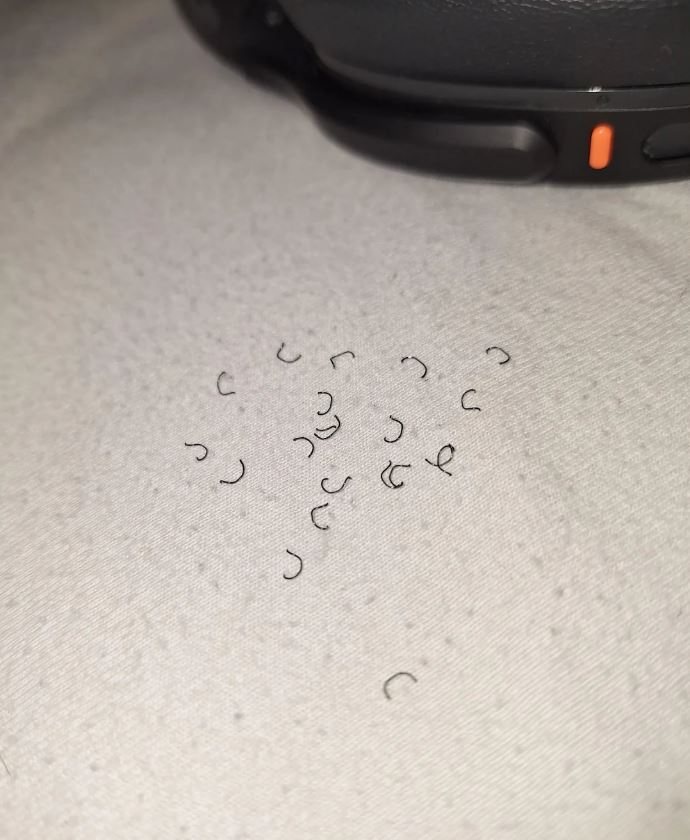Have you ever woken up and noticed tiny curled shavings on your bed, desk, or even on your wrist after taking off your smartwatch? At first glance, these little things might look like minuscule Velcro hooks, and if you don’t have any Velcro around, you might wonder where on earth they came from.

The mystery of these odd little shavings can be surprisingly confusing—until you realize they may be coming from something you wear every single day: your smartwatch or fitness tracker band. If your wearable device features a silicone or rubber strap, then chances are you’ve come across this strange phenomenon before. These little bits that look like shredded plastic or hooks from a Velcro strip are actually a result of everyday wear and tear.
Just like how a road gets dusty and breaks down from constant traffic, your watch band experiences a similar process. Constant friction, skin contact, sweat, and general movement slowly degrade the material, and over time, small bits peel off in the form of those mysterious curly flakes. There are several reasons why this happens, and understanding them can help you know when it’s time to swap out your strap. First, daily wear is a major contributor.
Repeatedly twisting your wrist, adjusting your watch, taking it on and off—all these actions add up over time, causing micro-abrasions that eventually lead to visible shavings. Second, sweat and natural skin oils play a part. When you wear your watch during workouts or all day long, moisture builds up underneath the band. Combine that with oils from your skin, and you’ve got a perfect storm for weakening the silicone or rubber material. Eventually, it starts to flake. Another factor that accelerates the issue is friction from surfaces and clothing.
Typing at a desk all day while resting your wrist or wearing long sleeves that constantly rub against your band will wear it down faster than you’d expect. Finally, the quality of the band itself matters a lot. Not all bands are created equal—those made from lower-grade silicone or rubber materials tend to degrade more quickly. On the other hand, higher-quality options, like those made from fluoroelastomer, can stand up better to the elements and daily movement. If you’re starting to panic about these Velcro-like flakes, don’t worry—they’re usually nothing harmful. These small shavings are simply a sign that your band is aging.
They won’t damage your device or hurt your skin unless you notice more severe issues like excessive shedding, visible cracks, or skin irritation. If that’s the case, it’s time to replace the band. Think of it as the universe giving you a subtle nudge that your favorite strap has seen better days. To keep this from happening too quickly next time, there are a few things you can do. First, keep your band clean. Washing it occasionally with mild soap and water will remove built-up sweat and oils that cause material breakdown. Next, try not to wear the same strap every single day. Rotating between bands gives each one a break and helps extend their overall lifespan. Be mindful of unnecessary friction—pay attention to how often your wrist rests on hard surfaces or how tight your sleeves fit over the band. Small changes like these can make a big difference. And of course, if you do need a new band, invest in one that’s made with more durable materials. Sometimes you get what you pay for, and a slightly more expensive band could last significantly longer. In the end, those odd little Velcro-like curls aren’t as mysterious as they seem. They’re simply a natural result of wearing a smartwatch or fitness tracker every day. If you start seeing them more often, take a closer look at your strap for signs of wear. Replacing it at the right time will not only keep your device looking sharp but also help prevent irritation or damage to your skin. The mystery of the Velcro-like shavings isn’t all that complicated once you know the cause—and a fresh strap might just make your wrist (and your style) feel brand new again.





